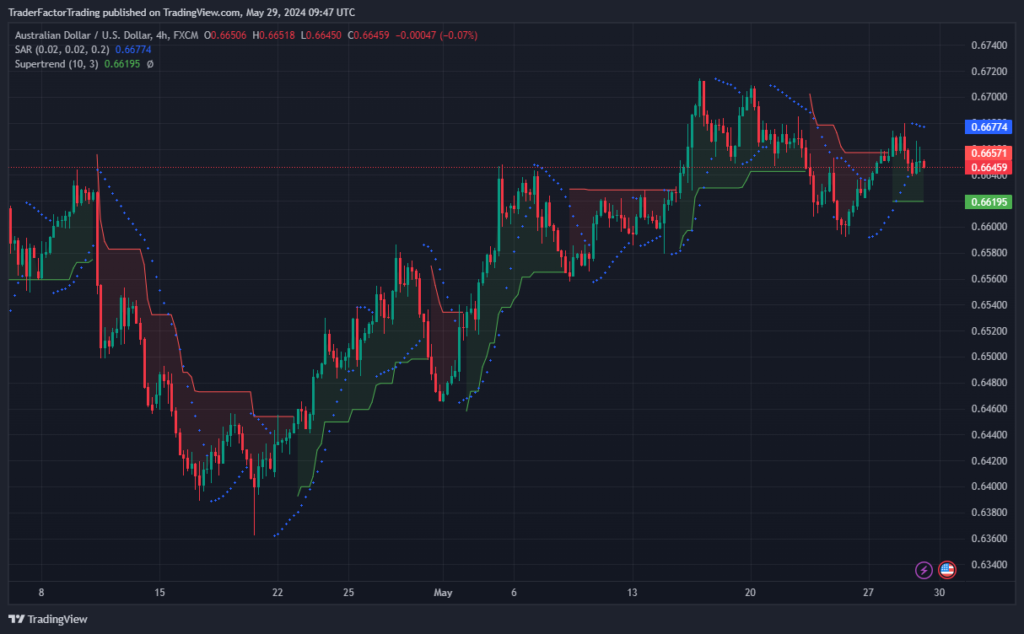The Australian Dollar (AUD) has appreciated following the release of higher-than-expected consumer inflation data. This development has sparked interest among forex traders, market analysts, and financial news readers. Wednesday’s data showed that Australia’s Monthly Consumer Price Index (CPI) surged, prompting speculation about potential future rate hikes by the Reserve Bank of Australia (RBA). This discussion will delve into the key points of this news and its implications for the market.
Higher-than-Expected Consumer Inflation
On Wednesday, the Australian Bureau of Statistics (ABS) released the Monthly Consumer Price Index (CPI) for April 2024, revealing a 3.6% year-over-year increase. This figure surpassed both the expected 3.4% and the prior 3.5% readings.
Michelle Marquardt, ABS head of prices statistics, commented: “Annual inflation increased to 3.6 percent this month, up from 3.5 percent in March. Inflation has been relatively stable over the past five months, although this is the second month in a row where annual inflation has had a small increase.”
Key Contributors to Inflation
The most significant contributors to the April annual rise were:
- Housing: Up 4.9%
- Food and Non-Alcoholic Beverages: Up 3.8%
- Alcohol and Tobacco: Up 6.5%
- Transport: Up 4.2%
Ms. Marquardt highlighted the volatility in certain items, stating, “CPI inflation is often impacted by items with volatile price changes like automotive fuel, fruit and vegetables, and holiday travel. It can be helpful to exclude these items from the headline CPI to provide a view of underlying inflation. Excluding these volatile items, the annual rise to April was steady at 4.1 percent.”
Housing Market Dynamics
Housing saw a 4.9% rise in the 12 months to April, slightly down from 5.2% in March. The rental market remains tight, with rents increasing by 7.5%, reflecting low vacancy rates. New dwelling prices also rose by 4.9%, as builders passed higher costs for labor and materials onto consumers.
Electricity and Food Prices
Electricity prices rose 4.2% over the year. The introduction of the Energy Bill Relief Fund rebates from July 2023 mitigated potential spikes, which would have seen electricity prices rise 13.9%.
Food and non-alcoholic beverages recorded a 3.8% increase annually, with all categories except meat and seafood contributing to the rise. Unfavorable weather conditions led to significant price hikes in fruits and vegetables.
Transport Costs
Transport prices surged by 4.2% due to higher fuel costs. Automotive fuel prices jumped 7.4% over the 12 months to April, following an 8.1% rise in March. “Fuel prices rose 2.2 percent in April, the third consecutive monthly rise, reflecting higher wholesale fuel prices,” Ms. Marquardt added.
Market Reaction and Implications (Australian Dollar Rises)
Following the CPI data release, the AUD/USD pair was up 0.11% on the day at 0.6655. This movement reflects the mixed sentiment driven by Australian economic data. Despite the positive CPI figures, the Australian Dollar’s performance was partially offset by weaker construction work data, which came in at -2.9% quarter-on-quarter in the first quarter, missing expectations of a 0.5% growth.
AUD/USD 4-hour Chart

Potential RBA Policy Shift
The stronger-than-expected inflation data could prompt the Reserve Bank of Australia (RBA) to consider another rate hike. Minutes from the RBA’s May policy meeting indicated that the central bank had contemplated a potential interest rate increase.
Impact on Retail Sales
Australia’s retail sales grew by just 0.1% in April, falling short of the expected 0.2% increase and only slightly reversing the previous month’s 0.4% decline. According to the ABS, cautious consumer behavior, driven by high borrowing costs and rising rents, has limited household spending. April’s retail turnover was A$35.7 billion ($23.78 billion), up a mere 1.3% from a year earlier. This sluggish growth is particularly notable given Australia’s population growth rate of over 2% per year.
Conclusion
The Australian Dollar’s appreciation reflects the market’s response to robust inflation data, which could influence future monetary policy decisions. Traders and market analysts will continue to monitor the RBA’s actions and other economic indicators closely.
For forex traders and financial news readers, staying informed about these developments is crucial for making strategic decisions in a dynamic market environment.
Disclaimer:
All information has been prepared by TraderFactor or partners. The information does not contain a record of TraderFactor or partner’s prices or an offer of or solicitation for a transaction in any financial instrument. No representation or warranty is given as to the accuracy or completeness of this information. Any material provided does not have regard to the specific investment objective and financial situation of any person who may read it. Past performance is not a reliable indicator of future performance.

















